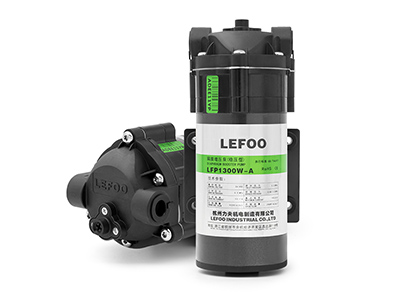Most Popular
The role of the RO booster pump is to increase the pressure and flow rate of the inlet water to a certain level at the same time, thus meeting the requirements of water production with RO membrane.
ro motor pumps indicators mainly include power (including working voltage, working current), working pressure, working flow, blocking voltage, blocking flow, water inlet pressure.
Mainly include non-self-priming, low boost pressure, high working current, low working flow, high or low sealing pressure, water leakage in the pump head, weak rotor (stuck), abnormal noise, etc.
(1) Reasons for not self-priming: It is usually caused by poor sealing performance of suction discs. For example, burrs or other granular debris jams the suction discs, causing them to be inconsistent with the water outlet pressure plate, resulting in air leakage.
Treatment method: choose a suction disc with suitable hardness and remove burrs or other granular debris.
(2) Reasons for low boost pressure: It is usually caused by poor sealing performance of the RO booster pump head, too small elasticity of the pressure relief spring or loose set screws.
Treatment method: improve the sealing performance of the pump head and select a suitable spring.
(3) Reasons for the large working current: Usually the winding of the motor rotor has a problem, or the rolling bearing is damaged during the installation process, and the phenomenon of jamming occurs.
Treatment method: replace the motor rotor or replace the rolling bearing.
(4) Reasons for the low working flow: Usually the elastic force of the pressure relief spring is too small, or the eccentric wheel is shoveled during the installation process, so that the eccentric angle reduces, and the pressure relief occurs.
Treatment method: choose a pressure relief spring with a higher hardness or replace the eccentric wheel. It may also be because the rotor speed is not enough, or the working voltage of the motor is too small.
(5) Reasons for excessive blocking pressure: It is usually caused by the excessive elasticity of the pressure relief spring.
Treatment method: choose a spring with appropriate elasticity.
(6) Reasons for too low blocking pressure: It is usually caused by too small elasticity of the pressure relief spring.
Treatment method: choose a spring with appropriate elasticity.
(7) Reasons for water leakage of pump head: The more common one is that the fastening screws of the RO booster pump head are not tightened, or the diaphragm is crushed during the installation process.
Treatment method: re-tighten the fastening screws of the pump head or replace the diaphragm.
(8) Rotor weakness (stuck): It is usually caused by an open circuit or a short circuit in the winding of the motor rotor.
Treatment method: replace the motor rotor.
(9) Reasons for abnormal noise: Usually the connection gap of the rotating part of the motor is too large or the rolling bearing is damaged during the installation process.
Treatment method: readjust the connection gap of the rotating part of the motor or replace the bearing.
More Related Products

 English
English  français
français  Deutsch
Deutsch  Español
Español  italiano
italiano  русский
русский  português
português  العربية
العربية  Türkçe
Türkçe  Zulu
Zulu 